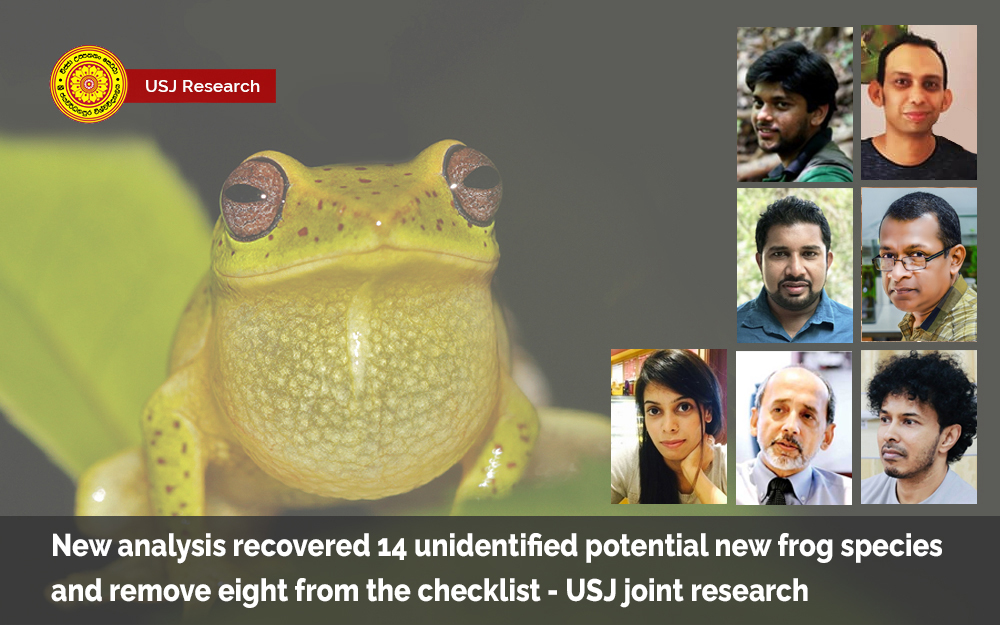Based on the results of a recently published molecular species delimitation analysis, eight species of shrub frogs are not distinct enough to be considered as separate species. However, they also note the presence of 14 distinct undescribed species as well. The paper pertaining to this has been published on 19th October,2021 in Plosone journal. Four species delimitation methods have been applied to the 16S rRNA frog barcoding gene for all species of shrub frogs. The researchers say, “the three mountain ranges in the wet zone, Knuckles, central hills and Rakwana are very important and playing a dominant role in allopatric speciation of these shrub frogs in the island. But among the species that are merged by the delimitation analyses, a pattern leading towards a model of parapatric speciation emerges”. They also recommend species delimitation analyses in the context of Phylogenetic Species Concept coupled with looking at multiple criteria for species description.
Sri Lanka is an amphibian hotspot of global significance. Its anuran fauna is dominated by the shrub frogs of the genus Pseudophilautus. Except for one small clade of four species in Peninsular India, these cool-wet adapted frogs, numbering some 59 extant species, are distributed mainly across the montane and lowland rain forests of the island. This analysis has merged P. procax and P. abundus (with priority to P. procax); P. hallidayi and P. fergusonianus (with priority to P. fergusonianus); P. reticulatus and P. pappilosus (with priority to P. reticulatus); P. pleurotaenia and P. hoipolloi (with priority to P. pleurotaenia); P. hoffmani and P. asanka (with priority to P. asankai); P. silvaticus and P. limbus (with priority to P. limbus); P. dilmah and P. hankeni (with priority to and P. hankeni ); P. fulvus and P. silus (with priority to P. fulvus).
This work is a collaborative effort by, Mr. Gajaba Ellepola, Mr. Jayampathi Herath and Prof. Madhava Meegaskumbura, University of Peradeniya, Sri Lanka and Guangxi University, China; Mr. Kelum Manamendra-Arachchi Postgraduate Institute of Archaeology, Sri Lanka; Dr. Nayana Wijayathilaka, Department of Zoology, USJ; Dr. Gayani Senevirathne Department of Organismal Biology and Anatomy, University of Chicago, USA and Mr. Rohan Pethiyagoda, Ichthyology Section, Australian Museum, Sydney, Australia.
Surprisingly, all analyses recovered 14 unidentified potential new species as well and those will be described by the team in the future.
Read the full Article : https://doi.org/10.1371/journal.pone.0258594
Read more Research Articles :
USJ and USDA-ARS collaborative research team discovered new Pathogenic Fungal species
Biofuel from Cyanobacteria and paper waste – The Centre for Water Quality and Algae Research










